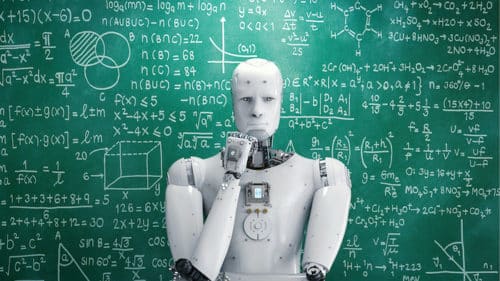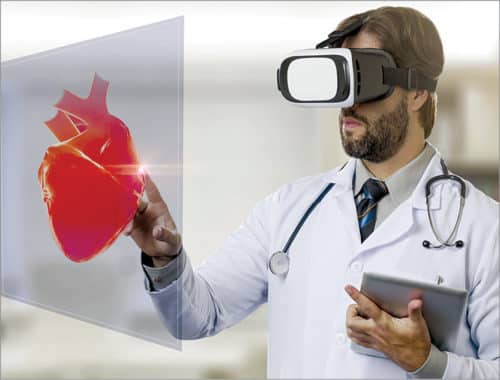With the availability of new technologies such as robotics, cloud computing, artificial intelligence (AI), and machine learning (ML), there has been tremendous growth in the education and skill development sector. These new technologies help in collecting data related to several parameters such as the academic performance of students, skills of teachers, and the like.
A few decades ago people had to search for information in libraries and other such places containing books and records. Today, due to the availability of the Internet, we can use search engines and assistants to get any information we want without going anywhere. Chalks and blackboards have been replaced by styluses and smartboards in most urban centres of learning.
Recently, the National Skill Development Corporation (NSDC) in India and Microsoft announced a collaboration aimed at providing digital skills to over 100,000 youth in the country over the course of one year. Microsoft Learn resource centre will thus be integrated with the eSkill India digital platform to provide access to personalised learning and in-demand skills.
With the coronavirus pandemic, the need to efficiently adopt and improve remote learning methods has become more indispensable than ever. There is a vast digital divide that brings about the need to make these technologies as accessible as possible to bridge the gap between rural and urban areas in terms of employability and skill. Some of the technologies that play a huge role in contributing to the education and skill development sector are discussed next.

Cloud computing
Cloud computing brings teachers and students on the same platform and provides ease of sharing resources remotely with each other. Teachers can create online courses while students can give virtual exams in organisations like schools and colleges. Working professionals can also take these classes. Assignments are not just limited to documents but can also include uploading a video recording or taking pictures of work and sharing them with peers.
Virtual classrooms allow hiring remote trainers and also reduce infrastructural expenses. There are companies in the field of education like Tata Class Edge, Educomp, and Pearson, who are aiding teachers in classroom teaching.
The storage devices like solid-state drives (SSDs) and hard disc drives (HDDs) must be optimised for cloud computing applications. There is no requirement of purchasing and maintaining servers and data centres. The databases, storage, and other services can be accessed whenever required, thereby saving time.
Most cloud providers ensure a base level of security for their cloud infrastructure. Using a VPN can ensure data security.
The digital assistant Beacon, launched by UK-based Staffordshire University and hosted on the Microsoft Azure cloud computing platform, is capable of answering questions that students might have to help them in studying, checking their moods, and suggesting them activities. If a student is still struggling, the assistant sends alerts to staff members so that they can help.
AI and ML
Artificial intelligence (AI) and machine learning (ML) have transformed learning to improve its outcomes. Personalised learning caters to the individual needs of students by adopting different teaching methods to make them more comfortable for upcoming tests. This is done by gathering actionable insights for platforms by tracking various data points and keywords from previous feedback, engagement, and interaction levels.
This is necessary to conclude the strong and weak points of different methods. Even checking test papers, grading, paper setting, creating mark-sheets, and tracking progress can be done automatically and intelligently. Many institutes have started using onscreen evaluation systems to auto-calculate scores. Natural language processing (NLP) makes real-time language translation possible, enabling people who speak different languages to communicate with one another.
In Andhra Pradesh, ML was used to collect and analyse the data of students related to parameters such as academic performance, skills of teachers, and the like. The application could find patterns to predict outcomes like probable students who would drop out in 2018-19.
Robotics and 3D printing
As in-demand skills change from time to time, developing problem-solving skills is a must. What could be a better way to engage children than educational robots? Even if the purpose is not to teach coding or robotics, skills such as analytical thinking and teamwork can be developed during the creation, design, and operation of robots. Personal robots are also useful for children with autism to help them in learning, besides improving social interaction skills.
Robotics is also applied in streams like engineering. Educational robotics kit LEGO Mindstorms has been integrated into curriculums at higher education institutions like MIT, University of Maryland, Tufts University, Trinity College, and the University of Manchester, among others. This is used mainly to assist in the mathematical analysis required to move a robot, such as using appropriate formulas and blocks for calculations.
Atal Tinkering Laboratories (ATL) established by the government of India in educational institutes across India have do it yourself (DIY) kits and equipment related to robotics like open source microcontroller boards and sensors, 3D printers, and more. As 3D printers are becoming more affordable, they are often found in classrooms (commonly Fused Deposition Modeling).
Physical manipulation of objects like historical artifacts, models of molecules and organs, and other 3D objects helps develop a better understanding and complements the usual theory-based curriculum. In the past, Macquarie University’s Department of Educational Studies, together with the company Makers Empire, did research to conclude how 3D printing could boost creativity, critical thinking, and design skills among primary school students.
XR
Extended reality (XR)—a term that combines augmented (AR), mixed (MR), and virtual reality (VR)—offers a wide range of opportunities for immersive learning and training experiences. This is highly useful in industries like healthcare, manufacturing, and aerospace where accuracy and precision are crucial to prevent dangerous repercussions.
AR and VR can instruct employees when they actually need to use it in real time. Learners can interact with the environment and get a view of different angles for performing their tasks. This reduces the time taken to conceptualise an idea from a video or document and execute it.

Individuals learn by practising and getting feedback on their mistakes and then iterating to improve them. A study by researchers at the Queensland University of Technology revealed that VR simulation improved the technical skills of undergraduate medical imaging students.
United Rentals, for instance, uses immersive learning for open space ratios to bring construction sites into the classroom and claims to have found a forty per cent reduction in training time. Walmart also uses VR to interview and train employees while Verizon has been using it to train its retail workers in handling robberies in stores.
Others
Digital learning guarantees more reach for the current generation of students. Apart from the above mentioned technologies, innovations like video-surveillance via Internet of Things (IoT) infrastructure and connected devices increase security, reliability, and capabilities for educational settings.
To utilise the huge amount of data we generate every day, data management software for data analytics makes the necessary data sets easy to understand. Enrollment reports, registration level statistics, and analysis of other such information can boost productivity and decrease costs.
Indian scenario
India has one of the largest higher education systems in the world. There have been numerous issues when it comes to the education sector employing technologies in the country, especially in rural areas. Many educational institutions still don’t have a central repository that collects and organises data. A lot of these don’t have standardised and digitalised things like certificates, marksheets, diplomas, and degrees. Other issues include outdated teaching methods, unavailability of well-trained teachers, inadequate student-teacher ratio, lack of enough teaching resources, and so on.
But with the Internet usage growing rapidly, the foundation for digital education is being laid. Take the example of SP Robotic Works, a company that provides an AI-assisted learning platform for teaching robotics and coding.
This, however, comes with a host of issues like poor connectivity and lack of proper knowledge about how to use these digital technologies and tools. Also, the content is not available in all the regional languages, which may be a barrier for many individuals.
Sometimes there are budget constraints in the initial implementation of efficient hardware and software too. Moreover, maintenance is often neglected. Promising models that can help at a large scale need to be introduced.
There are many restrictions currently with the technologies themselves. For some situations it is yet difficult to program machines to understand complex human interactions that aid people in making better decisions.
However, with the government’s focus on Digital India and digitisation of higher education, there are a growing number of innovations and startups working in this field. India being a leader in Information and Communication Technology (ICT) as well as other cutting-edge domains can provide an upper hand. Top institutes in the nation are working in collaboration with the HRD Ministry to develop a comprehensive structure and policy for implementing a robust online education system.
In May, union finance minister Nirmala Sitharaman launched the PM eVidya programme to promote digital education and make e-learning feasible for students and teachers. Under this, the e-learning portal DIKSHA provides e-content and QR coded energised textbooks for all grades, which will benefit nearly 250 million children in various states and union territories. The education content is currently available in fourteen languages, including Kannada, Malayalam, Assamese, Bengali, Gujarati, Marathi, Tamil, Telugu, Urdu, among others.
Akshay Chaturvedi, founder & CEO, Edtech Startup Leverage Edu, says, “It is great to see the Union government’s focus on education. The FDI part was in waiting for a long time, glad to have it come through—it will really help us make a big leap! Online education programmes, the introduction of new courses that will push students into careers of tomorrow, and of course ‘the Indian SAT’ for promoting #StudyInIndia—all are in the right direction, and I am personally very excited about us at Leverage Edu helping execute some of these parts.”
The National Education Policy for India, whose draft was prepared last year (and the policy has just been announced), aims to transform curriculum to minimise rote learning and encourage holistic development through skills such as critical thinking, digital literacy, scientific temper, communication, multilingualism, problem-solving, and social responsibility. There are plans to optimise resources and avoid unnecessary duplication of content by adding it to an online digital repository, such as the National Digital Library.
On World Youth Skills Day this year, UNICEF India announced its collaboration with SAP India to improve the employability skills of youth in the country for Covid-19 era and beyond it. Besides career counselling, UNICEF will provide digital education and occupational skillset to the underserved young people. The goal is to impact one million people by the end of 2022.
For helping individuals learn these resources and shape the next generation of professionals, higher education institutions have started to incorporate subjects like cloud computing from Amazon Web Services (AWS) and cybersecurity into their curriculum. Standardisation of teaching, learning, and research tools can improve overall skill development.

Recently, Reliance Jio launched its first smart glasses called Jio Glass. It works on mixed reality (MR) and can be powered by both cellular and wireless networks. It supports multiple apps for video conferencing and online collaboration. Besides other purposes, these can also be used for virtual classrooms to teach students online. The company’s online education platform called Embibe will be integrated with these smart glasses. Hence, the chances of solving the hurdles seem promising.






Robot coding
Hi Vipin, kindly elaborate.